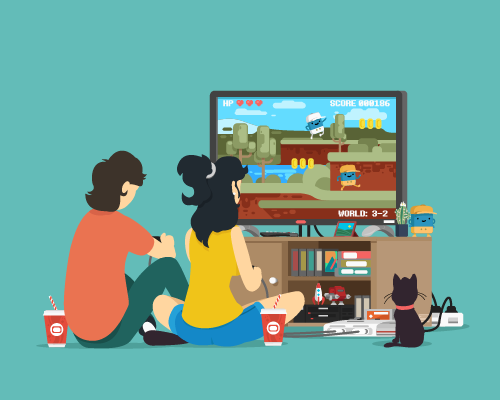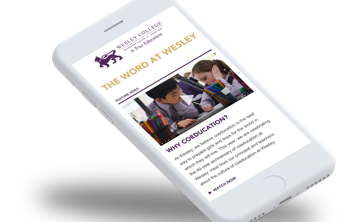
There’s much that we can learn from our recent virtual classroom experiences but also from the video game and social media world our students already inhabit, says Steven Coshutt.
When I meet new students at enrolment interviews and ask what they enjoy, many mention gaming, among other things – at which point there’s usually an eyeroll from their parents. Neither response is surprising: video games are almost universally popular with young people, and parents are almost universally concerned about them.
What does the research say?
So are video games bad or good? Many researchers conclude that, essentially, the jury is still out. Much of the research focuses on first-person shooter games, and typically finds that these do produce cognitive (intentional and planned) aggression and aggressive feelings. The debate centres around whether the research is really measuring aggression or competitiveness.
As Adam Lobel and colleagues explain in ‘Video gaming and children’s psychosocial wellbeing,’ what is agreed is that video games cleverly use feedback loops and positive reinforcement schedules to train gamers’ mental habits: to ‘win’ or solve a video game’s problems, the gamer has to learn ‘what works’ and is rewarded by progress through a game’s engaging environment as they find solutions.
As Lobel and colleagues note, if video games have the capacity to train gamers by rewarding aggression – or is that competition? – they also have the capacity to train gamers by rewarding communication and cooperation. Think, on the one hand, of a first-person shooter game like Call of Duty: Black Ops II, currently ranked 18th by Gaming Gorilla, and on the other hand, ninth-ranked Roblox, a multiplayer game creation platform that enables users to create and play everything from racing to role-playing games, simulations to obstacle course games. That has some obvious implications for online learning.
Playing, learning and connecting through digital technology
It’s estimated that somewhere between 90 and 97 per cent of children play video games, so it seems that social development has partly migrated from physical playgrounds to digital ones. According to Lobel and colleagues, just as traditional forms of play provide a positive context for children’s psychosocial development, so too video games provide a context for children to bond with others and learn the benefits of cooperation and a context for the fulfillment of self-determined needs, thereby positively contributing to psychological wellbeing.
Feedback and positive reinforcement isn’t limited to video games: digital learning environments, and assessment, have used similar strategies for some time now. According to Mike Timms in ‘Assessment by stealth in a digital learning environment,’ digital learning environments can now track, analyse and even adapt to the characteristics of students as they respond to a task in real time, just like a video game. Digital learning environments are now being used to record not only a student’s response to a task, but the actions they took during the task and how much help they needed to reach a successful conclusion. ‘Game-like digital learning environments generate data on the actions students take, including the type of interaction, the frequency of interaction, the sequence of interactions and the timing of those interactions,’ Timms notes.
One of the crucial differences for today’s students is the role social media plays in the way they interact with their friends and the wider world, compared to previous generations. Engaging with peers on social networks like Instagram, Snapchat or TikTok, or playing immersive role-playing games, are now important ways in which youth connect socially. The seemingly constant use of technology – immediately responding to texts, social networking posts and other notifications – may actually be a new way of maintaining peer relations and engaging in communities that are relevant to them.
A brave new world?
Maintaining peer relations and engagement was certainly important when containment measures to address the COVID-19 pandemic required our students to learn from home. Our students adapted quickly to remote learning, collaborating with their teachers and peers formally but also, importantly, informally through MS Teams video and chat, and other channels. This is partly because they have the digital skills, but also because engaging in digital communities is natural to them. The synchronous and asynchronous teaching and learning approaches we use for online home learning through platforms like MS Teams were different to social media platforms and video games in degree but not in kind, so our students didn’t need to adapt.
Our experiences in the virtual classroom environment in Term 2 (and which have continued partly into Term 3) gave us plenty of insights into ways we can use online learning approaches to complement our on-campus approach. It’s worth remembering, as we explore this brave new world, that the ‘brave new world’ Miranda glimpses at the end of Shakespeare’s The Tempest is not entirely ‘goodly’. Our challenge is to blend the best of online learning with the best of face-to-face teaching and learning on campus.
Our school motto gives us good guidance: ‘sapere aude, incipe.’ or ‘dare to be wise, begin,’ makes clear that our mission is to progress with wisdom, not rashly but by daring to take the next step.
Sapere Aude.
Steven Coshutt is the Head of Middle School at Wesley’s Elsternwick Campus.
